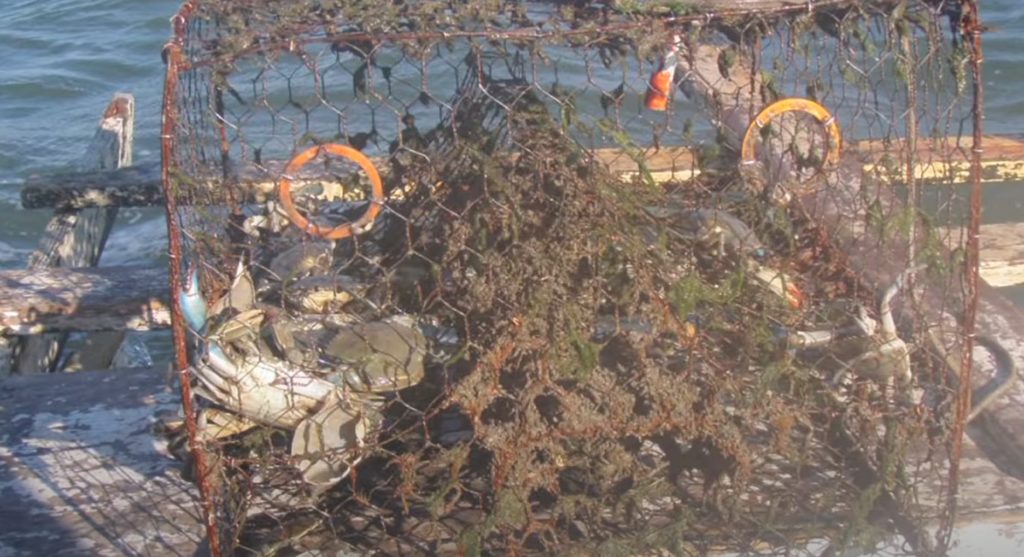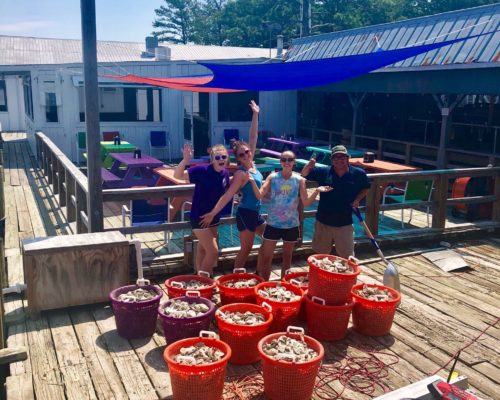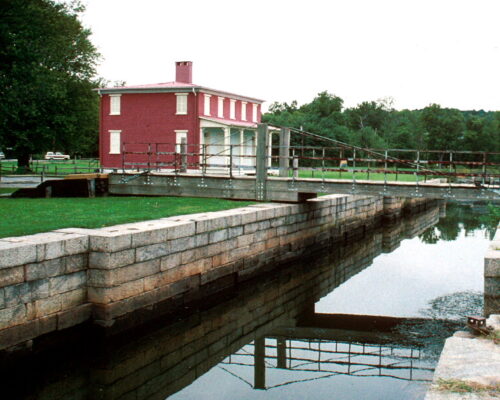NOAA Fisheries tapped William & Mary’s Virginia Institute of Marine Science (VIMS) to lead a new nationwide program to reduce “ghost fishing” by derelict crab and lobster pots abandoned or lost to storms and vessel entanglements. The new role comes with a record $8 million grant for VIMS to administer the program.
This Trap Removal, Assessment & Prevention (TRAP) program will include partner institutions, commercial fishermen, and interested Native tribes in the Pacific Northwest and along the Atlantic coast from Florida to the Gulf of Maine. The TRAP program will initially focus on the gear used to catch crabs (blue, Dungeness, and stone) and lobsters (American and spiny). Federal funding for the program overall is $8 million over four years, distributed by the VIMS Center for Coastal Resources Management (CCRM) through a competitive grant program.
The origins of the TRAP program lie in a longtime partnership between VIMS, the Virginia Marine Resources Commission (VMRC), and Virginia watermen to hunt down, pick up, and dispose of ghost pots in their Virginia Marine Debris Removal Program. It began in 2009 with a federal disaster declaration put in place because of a crash in crab stocks that required much lower limits for watermen.
To help them keep their livelihoods, both Virginia and Maryland used disaster funds to compensate the watermen for other work, including fishing for ghost pots using a side-scan sonar database that indicated areas of the greatest concentration of derelict pots. Maryland, for example, employed more than 300 crabbers in its derelict pot removal program. The program removed approximately 8,000 partial and whole ghost pots from targeted areas of the Bay. Watch these videos in Maryland and Virginia to see how it’s done.
Replacing lost pots in the Chesapeake has always been treated as an annoying cost of doing business. Because it is often gradual, though, no one thought much about its cumulative impact until the Bay states used some of the disaster funding to look deeply into the issue. It turns out that the impact of ghost pots in the Chesapeake is astounding, as this infographic from NOAA’s Marine Debris Program demonstrates. Watermen participating in the removal program saw firsthand the numbers of crabs and the range of other creatures that ghost pots kill (and waste). They reported what they found, both numbers of pots and their contents. This creative combination of the watermen’s hands-on expertise and the scientists’ analytical capabilities built a powerful database.

The new NOAA grant program provides a first opportunity to draw together similar marine debris removal programs in other waters across the United States.
Dr. Kirk Havens, Director of the VIMS CCRM, points out, “By coordinating the removal of derelict traps nationwide, we can leverage our experience and expertise to benefit coastal ecosystems and economies from Maine to Alaska.”
The first order of business will be developing a TRAP website, an online information hub to provide users with details on trap removals and program participation. The site will also house a data and mapping dashboard similar to what VIMS currently provides for coastal shorelines and the earlier Virginia Marine Debris Removal Program.
-John Page Williams




